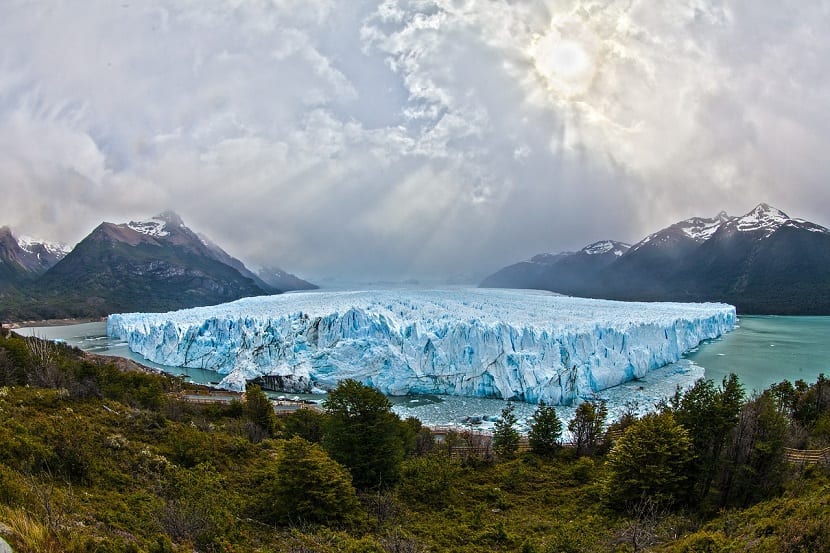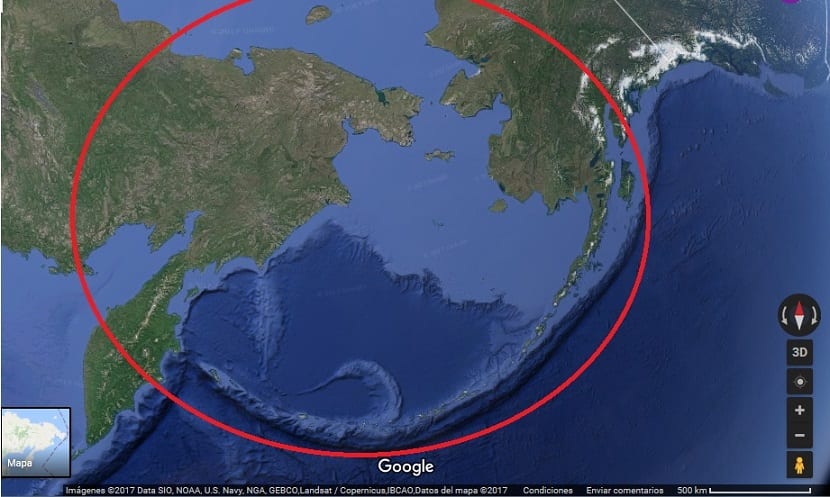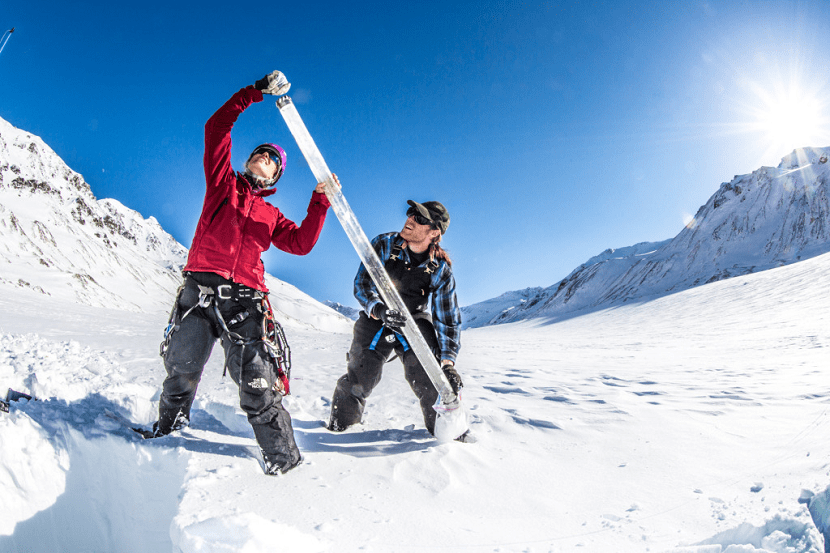
Unfortunately, we are used to seeing the consequences of climate change. An increasingly hot world and the consequences of the gradual and continuous increases in temperature. Many things that we also see happening today were not like that before. Our home, planet Earth, has had cycles of hot and glacial times. Human history is long enough for us to experience the last ice age. Which also played a very important role in our history in our demographic expansion around the globe. One of those milestones was undoubtedly the arrival of human beings to the American continent.
And is that There are several theories of how humans came to the Americas. Of all of them, one of the most plausible and proven is that they walked across the “Beringia Bridge”. Also known as just Beringia. The entire red circle in the image indicates the macro bridge that originated 40.000 years ago. It is calculated that the human being could cross it 20.000 years ago walking, while the sea level had dropped 120 meters.
What was our planet like then?

Image taken from Google Maps of the Bering Sea where the Beringia Bridge was located
The ice covered a large area. About three times more than the current average. The average temperature of our planet was 10ºC lower than the current average of 15ºC. The Beringia Bridge, which is the part marked with the red circle, formed a means of crossing both continents. In periods of ice age, the sea level drops. In turn, areas that are liquid solidify. As we have commented, the glaciers were much more extensive. And for a nomadic civilization, it was a gateway to the new world.
They went through Northeast Asia, present-day Russia, passing through the Beringia Bridge, the current Bering Sea, they reached the American Northwest, present-day Alaska. Utensils from our ancestors have been found, typical of the culture they had. Same utensils, for the same utility, cut and made in the same way.
The end of the ice age

Temperatures paleoclimatological
5.000 years later, about 15.000 years ago, the ice age ended. Abruptly, the temperature rose in the next 1 to 3 years. According to the records of paleoclimatologists, who can study the changes in the climate of the last 125.000 years in ice with remarkable efficiency. As well in a way due to a liberalization of the CO2 that was stored in Antarctica, as recent studies and research show. The Barcelona Institute of Environmental Sciences and Technologies has participated in the latter.
The planet began to reestablish itself. Our intrepid nomads in search of survival, continued walking from North to South throughout America. The glaciers began to recede, the sea level was rising again, and with it, the passage that both continents was sealed since then. Only until a little over 500 years ago, and officially, both civilizations were going to meet again, having developed in different ways.
Paleoclimatology. Techniques and secrets of ice
Paleoclimatologists use different techniques to deduce paleoclimates. For example, sedimentary content, where from the chemistry of rocks or fossilized sediments to deduce fauna, flora, plankton, pollen ... Another technique would be dendroclimatology, where information is extracted from the rings of petrified trees. The corals to see the Tº of the surface level that was in the sea. The sedimentary facies where the sea level can be glimpsed, showing great paleoclimatic changes. And in the case of ice, the most used are usually the following:
paleopollen
Between the ice sheets formed and compacted year after year, we can find paleopolen. This allows estimating what vegetation there was during those yearsEven in it is ash from a volcanic eruption.
Air
Air trapped in the form of microbubbles is an innate source of information due to its composition that helps to determine what type of atmosphere existed at that time.
Stable isotopes
By evaporation of water, and a slight difference in stable isotopes that are stored in ice due to weighing less than hydrogen and oxygen, correlations have been found between different periods.
